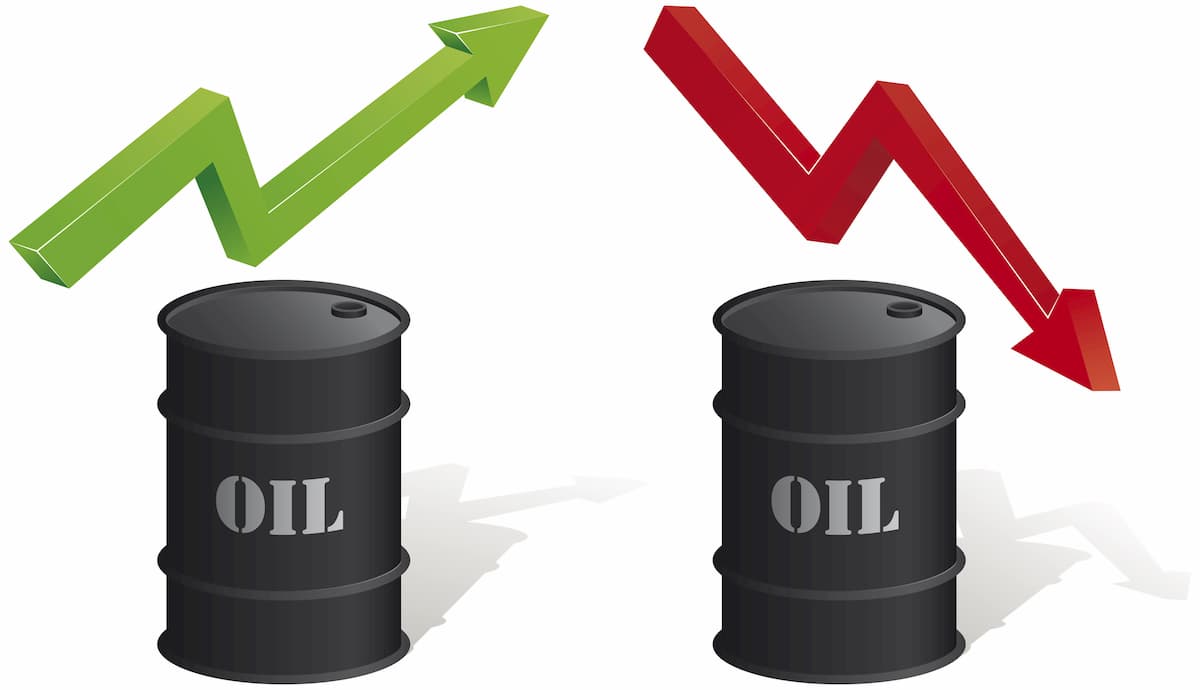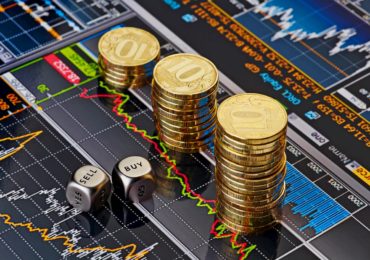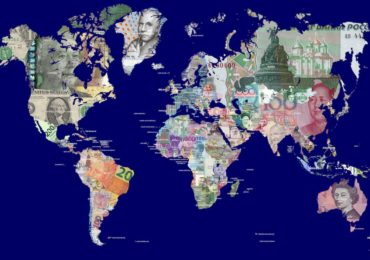Crude Oil Futures Trading – A Guide To Understanding The Market
Crude oil is a popular liquid fuel that is extracted from the ground through drilling. The oil is used for various purposes, including producing petroleum products, making plastics, facilitating transportation, etc. Crude oil futures currently ranks among the commodities with the highest liquidity in the world, thereby providing high volumes and precise oil trading charts.
The market is highly active and is preferred by traders across the globe. The prices of oil tend to fluctuate quite excessively, making it an ideal commodity for traders who are looking for a venture. The fluctuations in the prices of crude oil also influence the prices of stocks, currencies, and bonds around the world.
Where Is Crude Oil Used?
Crude oil is the base ingredient of a wide range of products, especially transportation fuels such as diesel, jet fuel, and gasoline. In 2017, the US alone consumed 7.3 billion crude oil barrels. Of this number, 47% was taken by motor gasoline, heating oil consumed 20%, and the remaining 8% went to jet fuel. The rest went in other petroleum products.
Furthermore, crude oil also produces petroleum products. When it is mixed with chemicals, the oil can be a base ingredient for more than 6,000 products. Petroleum by-products are used to make asphalt, lubricating oils, tar, paraffin wax, etc. Crude oil is also used in chemicals, insecticides, perfume, vitamin capsules, soap, fertiliser, etc.
Oil is also a base ingredient used for manufacturing plastics. It is used in carbon fibre, cosmetics, PVC pipes, and aircraft.
Fundamentals Of Crude Oil Futures Trading
Supply and demand are the two prominent aspects of trading oil. When there is any report regarding crude oil or the country from where it is derived, the first thing to consider is how the news or incident has affected supply and demand, as it will impact the price. The following are demand and supply factors:
Demand Factors:
- Time-Frame
The consumption of oil tends to remain high throughout the year. Summer is a time when there is increased activity and higher consumption of oil. During winter, people tend to use more oil products to generate heat for their houses and automobiles.
- Consumers of Oil
The United States of America and European countries are the biggest consumers of oil. However, the growth in Asian countries, such as Japan and China, has increased the demand in these nations. Being a trader, it is important that you consider the demand level in the different nations along with economic performance. A low down in the factors can make the price of oil fall.
Supply Factors
- Organisation of the Petroleum Exporting Countries (OPEC)
Product cuts or an extension in OPEC can result in an alteration in the oil price. For instance, in 2016 the cartel announced that it would be reducing the global supply of oil by 1.9%, and the price of oil escalated from USD 44/bbl to USD 80/bbl.
- Impact of Maintenance or Outages
When prominent refineries around the world are experiencing any outages or maintenance, it can significantly impact the supply of oil. Additionally, conditions of war in Middle East countries adversely impact the supply. For instance, during the Libyan Civil War in 2011, the price of oil rose by 25% in a matter of a few months.
- Oil Suppliers
To become a successful crude oil trader, you must be aware of the top oil suppliers across the globe. This way, you should be able to identify reliable and credible sources to facilitate trade.
What Are The Potentials Of Crude Oil Trading?
Crude oil is the major source of energy for the world economy, making oil futures full of tremendous potential. Considering that it is a naturally derived fossil fuel, it is refined into a wide range of products, including diesel, gasoline, lubricants, wax, etc. Throughout the year, the demand for oil stays high, so that it is traded in high volume and stays liquid. Therefore, high volatility, tight spreads, and accurate chart patterns are important aspects of crude oil trading.
There are multiple ways to invest in crude oil; however, you need to be extremely patient and proactive to make a mark in the market. The high vitality of this market is not for faint-hearted traders. Crude oil futures are agreements to purchase or sell at a particular date at a specific price in the future. In this, traders are never granted the possession; instead, they merely sell-off a futures contract prior to the expiration date.
Oil exchange-traded funds are simpler to invest in exchange-traded funds (ETFs) as opposed to in oil futures. This is because they follow the same prices of oil futures; however, they are equally volatile. There are some ETFs that follow the stocks of oil enterprises, and their prices are influenced by the stock market as well as oil prices. Even when the prices are escalating, the ETF prices can drop if investors retrieve their funds from the stock of oil companies.
Price Fluctuation Of Crude Oil

The reason why prices of oil fluctuate swiftly is that traders who hold short positions in the market try to cover their positions quickly when the price rises, either causing losses or corroding their gains. For this to happen, they have to position their buy orders to cover. This buying wave is executed simultaneously when speculators are beginning to create or include long positions.
The shorts will quickly cover because there is a lot of risk, especially if a major development arises that impacts the supply. In this case, shorts can lose more money than they have invested, which can result in a margin call from the brokerage. This is one of the most challenging decisions for investors around the world.
Generally, oil prices spike when there is news of some turmoil in the Middle East. Consequently, prices tend to become stable and begin to move lower until there is some unquestionable evidence supporting the disruptions of the supply. Determining such flow of buying and selling is imperative in order to avoid loss in the financial markets.
For a major part, crude oil is a trending commodity that is significantly driven by psychological movements. Trading from the trending side will assist in improving the success odds. Crude oil also gets restricted in the range of considerable movement. A trader who is skilled enough to identify these ranges has tremendous opportunities to purchase at the low end as well as sell at the high end. Some investors trade these ranges until there is a clear getaway in any manner.
The US dollar value is the most important element of oil prices. If the dollar price gets higher, it creates increased pressure on the price of oil. A lower value of the dollar, on the other hand, helps in supporting increased prices of oil. Additionally, crude oil also moves parallel with the stock market. When the economy is growing, and the stock market is booming, the prices for crude oil tend to go higher. However, constantly high-moving oil prices can strangle the economy. When it comes to the stock market, the prices of oil tend to move in the opposite direction.
A Guide To Trading In Crude Oil
To become a successful oil trader, you need to follow an effective strategy. You need to have a strong knowledge of understanding the primary factors that affect the price of oil and implement the right strategies. An effective crude oil trading strategy encompasses fundamental analysis, risk management, and technical analysis.
After traders have comprehensively understood the fundamental factors associated with supply and demand that impact the oil prices, they can assess the best ways to enter into the market through technical analysis. Thereafter, risk management techniques should be implemented in order to make valuable crude oil trades.
Crude Oil Futures – Performing In A Volatile Market
Crude oil traders are often working in a highly volatile ecosystem. A major social or economic event can occur overnight, which can result in oil prices fluctuating extensively and unpredictably. This can also occur throughout the day since trade occurs 24/7. Whether it’s the economic tension in a country or a war situation in the Middle East, concerning events can aggravate the movement price.
The supply and demand flow is important in determining the movement of price; primarily the crude oil market moves on the emotions of the retail investors. So if the tension is high in the Middle East, the extent of supply disruption cannot be predicted, and generally, traders tend to react promptly to such news.
Day Trading For Crude Oil
Crude oil is among the most popular markets for day traders. It reacts positively to a pivot point along with resistance and support levels. Traders need to use stop orders while trading in the crude oil market. They tend to trigger the trades automatically and help in mitigating the risks of the market and ensure efficient run-ups all the time. Traders will come across many trading opportunities in the market to generate revenue. Typically, traders tend to close the position by the end of the day in order to make sure they rest without worrying about the volatility of the market overnight.
Top Trends That Will Drive The Oil Market In 2020
The following are the popular trends that oil market traders should watch out for:
The Production Of US Shale Will Continue To Increase
US shale growth is presently falling; however, market analysts speculate that there will be a rise in the supply of oil from the United States. This growth might be slower because of the reduced CAPEX; however, the country will remain the prominent contributor of the non-OPEC supply.
The Prices Of Oil And Gas Will Be Range-bound
The increasing production of oil from non-OPEC countries is speculated to keep a strong lid on the prices of oil, and they are expected to increase in the global economy, whereas the demand for oil growth will remain under floor prices.
Sudden Impacts Will Have A Lesser Impact On Prices
Owing to the increasing supply from non-OPEC nations, unexpected outages will have a less significant impact on the prices of oil as opposed to its impact in five to ten years.
There Will Be Higher Mergers And Acquisitions Between Oil And Gas In The US
There has been a lot of distress in the oil and gas companies in the US, and they have limited funding options. This means smaller companies might be acquired by the conglomerates, which can help in cutting the cost and generate more scalable operations.
Final Thoughts
To become a trader in the crude oil market, one requires strong skill sets to produce stable profits among the high volatility. Players who wish to trade oil futures must understand how the commodities flow, the current nature of the market, price history, and many other factors associated with the market.
We like to keep our pages fresh and update them periodically. Sign up to stay in the loop with the latest FX Guys News!











